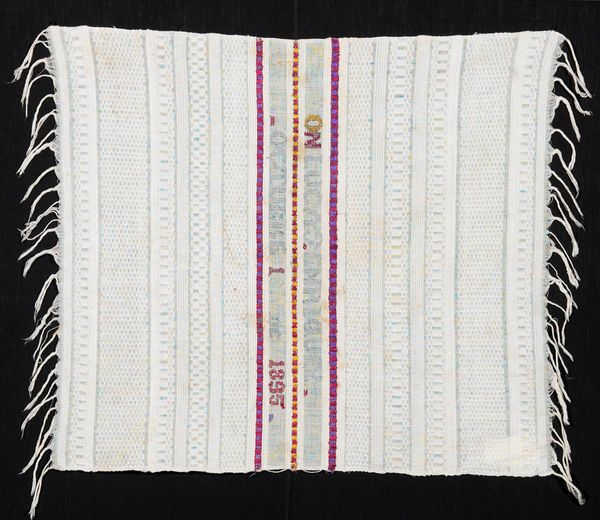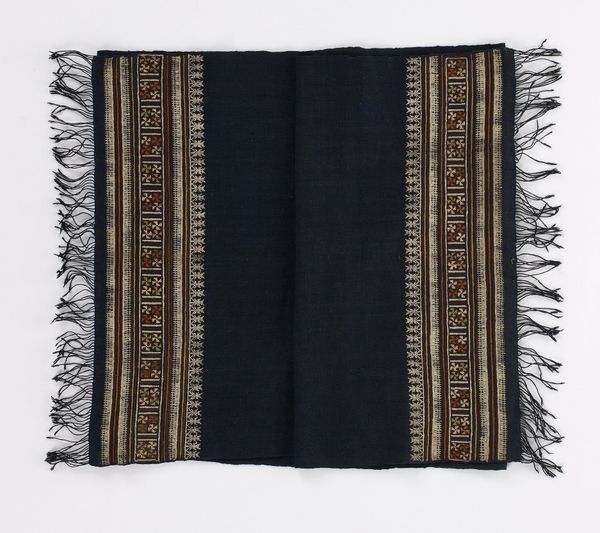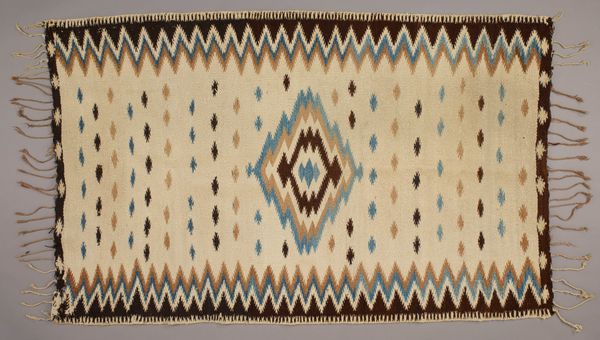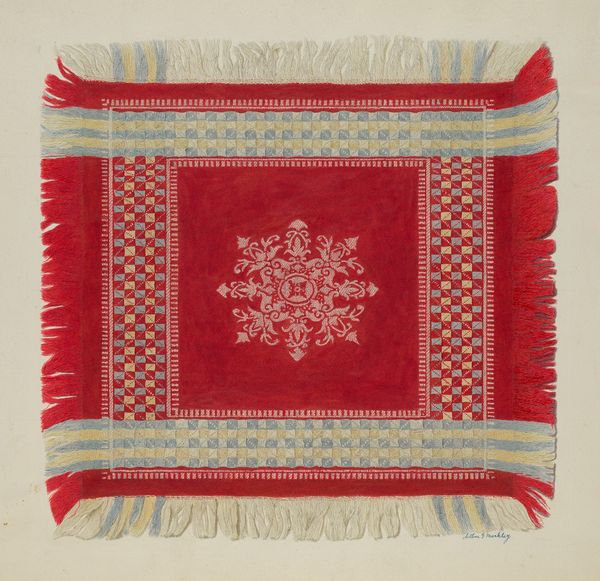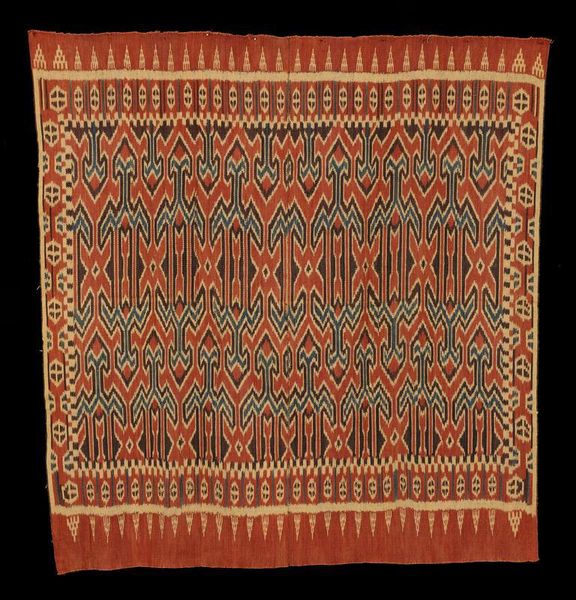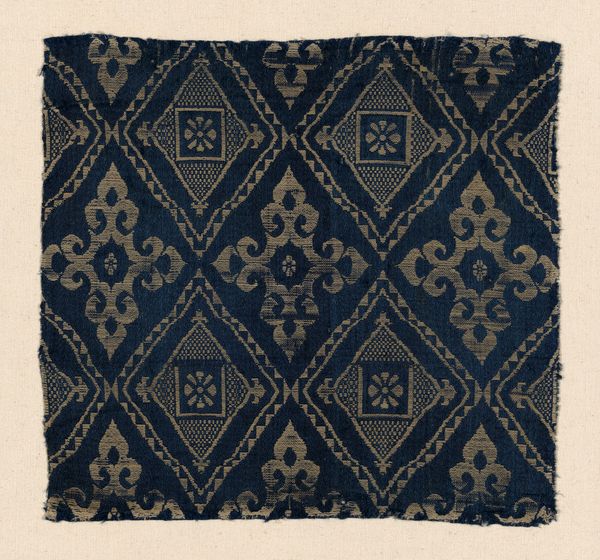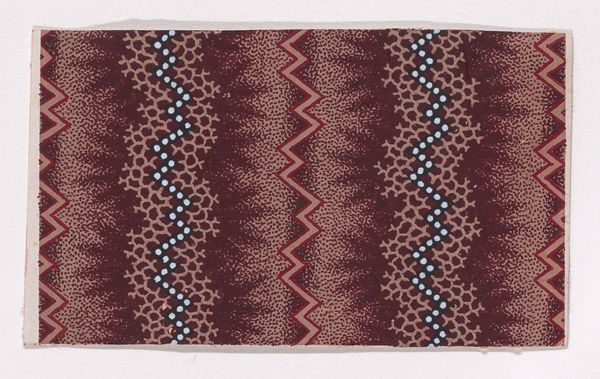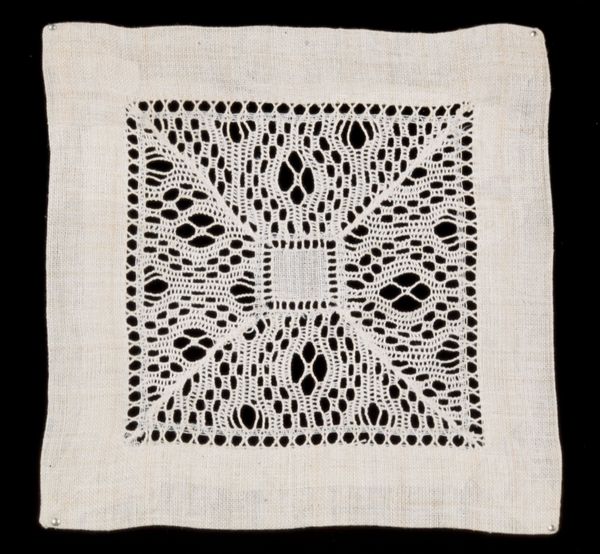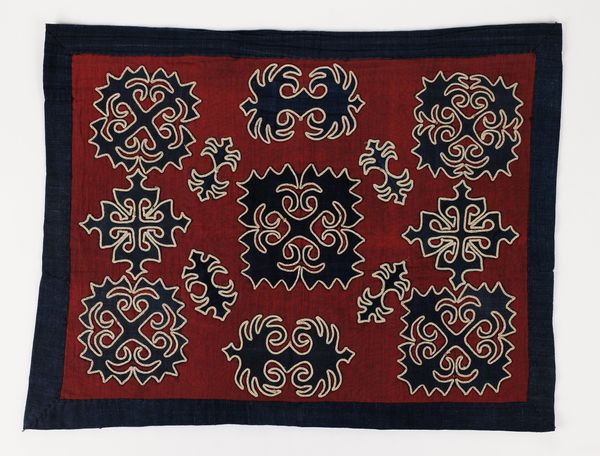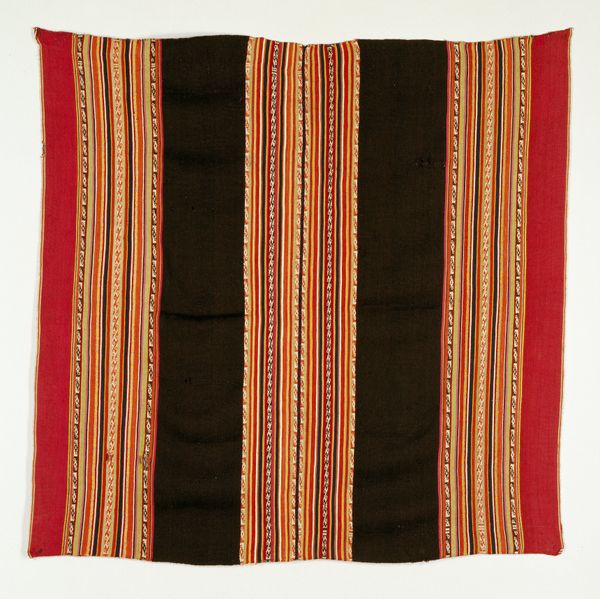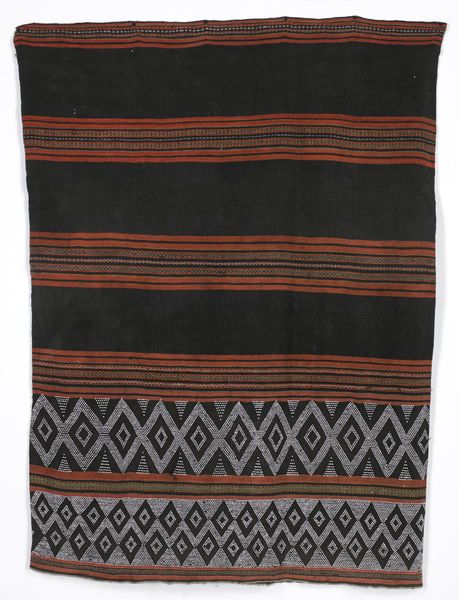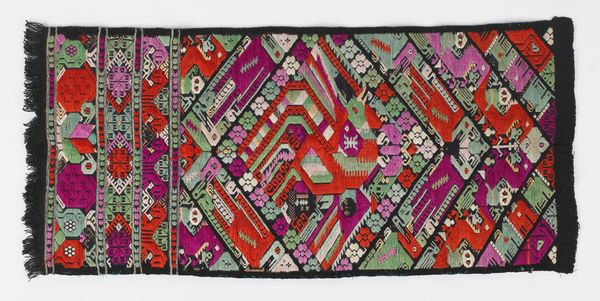
fibre-art, weaving, textile
#
natural stone pattern
#
fibre-art
#
weaving
#
textile
#
repetitive shape and pattern
#
ethnic pattern
#
geometric
#
repetition of pattern
#
vertical pattern
#
regular pattern
#
pattern repetition
#
textile design
#
imprinted textile
#
layered pattern
#
indigenous-americas
Dimensions: 32 3/4 × 37 1/2 in. (83.19 × 95.25 cm) (without tassels)
Copyright: No Known Copyright
Curator: What strikes me immediately about this textile is the muted palette –earthy browns and creams – lending it a serene, almost meditative quality. Editor: And serenity isn't necessarily the first thing I associate with textiles, considering the historical and social role they've often played, particularly in indigenous communities in the United States. This piece, titled "Textile," made around 1950 by Daisy Tauglechee, uses wool and pigment. It is currently housed at the Minneapolis Institute of Art. Curator: Knowing it’s by Daisy Tauglechee certainly shifts my perspective. The geometric abstractions, so carefully woven, speak to a specific visual language. Do you see any direct symbolism embedded in the patterns? Editor: While the geometric forms resist easy readings, considering Tauglechee's context and the time period, the "arrows" could subtly reference traditional lifeways threatened by modernization, even as it reclaims textile work. Curator: I’m also wondering about the context of "craft" versus "art." Works like these blur that line deliberately, pushing back on hierarchical structures within the art world. Editor: Precisely. Tauglechee, intentionally or not, is engaging with a history of indigenous art production devalued as "craft." The piece acts as an intervention, demanding a re-evaluation of those categories. How are such distinctions perpetuated institutionally? Curator: And that relates to the contemporary value of Indigenous art today, doesn't it? We can trace a throughline from these mid-century textiles to today’s vibrant Native American art scene. Editor: Exactly. It's about the artwork's enduring relevance and its power to foster conversations about representation and cultural identity. Curator: It’s pieces like this that keep those important narratives alive. Editor: It's through sustained inquiry that we better understand their significance, revealing their dynamic participation in shaping our visual culture.
Comments
No comments
Be the first to comment and join the conversation on the ultimate creative platform.
